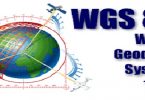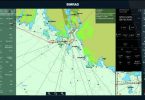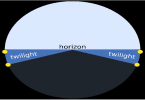As per SOLAS chapter V, Regulation 12
- Vessel traffic services (VTS) contribute to safety of life at sea, safety and efficiency of navigation and protection of the marine environment, adjacent shore areas, work sites and offshore installations from possible adverse effects of maritime traffic.
- Contracting Governments undertake to arrange for the establishment of VTS where, in their opinion, the volume of traffic or the degree of risk justifies such services.
- Contracting Governments planning and implementing VTS shall, wherever possible, follow the guidelines developed by the Organization. The use of VTS may only be made mandatory in sea areas within the territorial seas of a coastal State.
- Contracting Governments shall endeavour to secure the participation in, and compliance with, the provisions of vessel traffic services by ships entitled to fly their flag.
- Nothing in this regulation or the guidelines adopted by the Organization shall prejudice the rights and duties of Governments under international law or the legal regimes of straits used for international navigation and archipelagic sea lanes.
VTS may range from the provision of simple information messages to ships navigating in certain areas, such as position of other traffic or meterological hazard warnings, to extensive management of traffic within a port or waterway. Generally, ships entering a VTS area report to the authorities, usually by radio, and may be tracked by the VTS control centre. Ships must keep watch on a specific frequency for navigational or other warnings, while they may be contacted directly by the VTS operator if there is risk of an incident or, in areas where traffic flow is regulated, to be given advice on when to proceed.
The development of VTS
Traditionally, the master of a ship has been responsible for a ship’s course and speed, assisted by a pilot where necessary. Ships approaching a port would announce their arrival using flag signals. With the development of radio in the late 19th century, radio contact became more important.But the development of radar during World War Two made it possible to accurately monitor and track shipping traffic. The world’s first harbour surveillance radar was inaugurated in Liverpool, England, in July 1948 and in March 1950 , a radar surveillance system was established at Long Beach, California – the first such system in the United States.
The ability of the coastal authority to keep track of shipping traffic by radar, combined with the facility to transmit messages concerning navigation to those ships by radio, therefore constituted the first formal VTS systems.The value of VTS in navigation safety was first recognized by IMO in resolution A.158 (ES.IV) Recommendation on Port Advisory Systems adopted in 1968, but as technology advanced and the equipment to track and monitor shipping traffic became more sophisticated, it was clear guidelines were needed on standardising procedures in setting up VTS. In particular, it became apparent that there was a need to clarify when a VTS might be established and to allay fears in some quarters that a VTS might impinge on the ship’s master’s responsibility for navigating the vessel.
As a result, in 1985, IMO adopted resolution A.578 (14) Guidelines for Vessel Traffic Services, which said that VTS was particularly appropriate in the approaches and access channels of a port and in areas having high traffic density, movements of noxious or dangerous cargoes, navigational difficulties, narrow channels, or environmental sensitivity.
The Guidelines also made clear that decisions concerning effective navigation and manoeuvring of the vessel remained with the ship’s master.The Guidelines also highlighted the importance of pilotage in a VTS and reporting procedures for ships passing through an area where a VTS operates.






